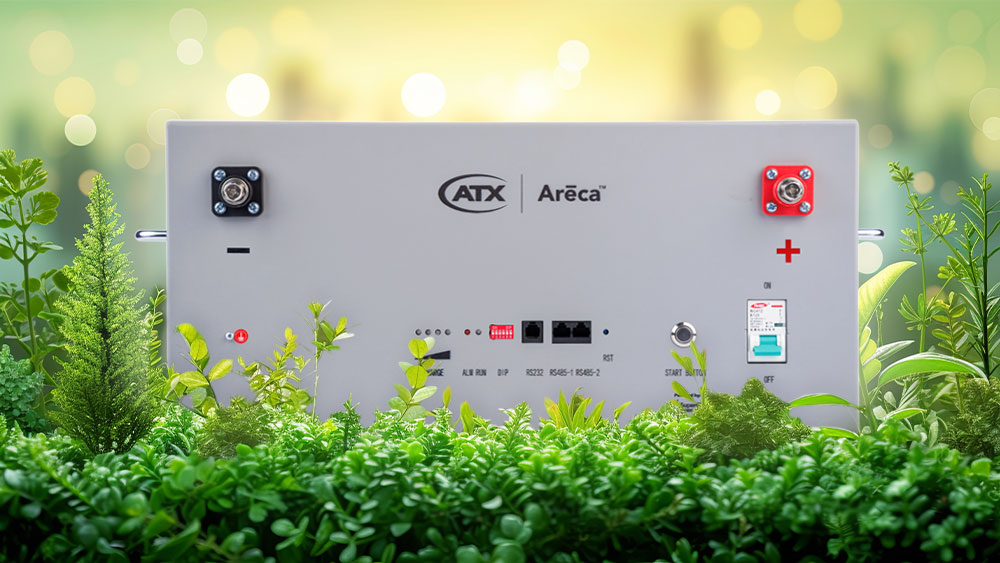Blog
March 20, 2024
How Areca Hybrid Supercapacitors Can Help Communications Providers Accelerate their Energy Efficiency Goals
By Joe McGarvey, Marketing Director |

Nearly all the world’s communications service providers have pledged to improve the energy efficiency of their businesses, setting goals and milestones and then publishing annual reports chronicling the progress they are making toward meeting those efforts. Comcast, for example, unveiled in March of 2023 that it had increased energy efficiency since 2019 by 36% across its network. Other communications service providers have announced similar progress.
Reducing energy usage is, of course, not just a noble and responsible pursuit, but an existential one, especially when it means cutting down on fossil fuels and non-renewable sources of energy. It’s also good business, as many consumers are now reluctant to purchase goods or services from companies they do not view as eco-friendly citizens of the planet.
For all those reasons, altruistic or otherwise, communications service providers, including cable operators, telecom companies, mobile operators and even datacenter providers, have a vested interest in reducing the amount of energy they draw from non-renewable resources, including gas-powered backup generators. The technologies and techniques that communications service providers and other large companies are currently employing to make their operations more energy efficient include AI, smarter software and hardware, as well as increasing usage of solar, wind and other forms of renewable energy.
Enter Hybrid Supercapacitors
By replacing the tens of thousands of single-use, lead-acid batteries in their networks with hybrid supercapacitors, communications providers may be able to reach their sustainability goals even sooner.
But a potential source of clean energy that may currently not be on the radar of many communications service providers are the energy storage systems they use to provide backup power when the flow of electricity from the grid or other sources is interrupted. That’s mostly because the current and dominant backup energy storage medium for communications service providers is lead-acid batteries, a dangerous, dated and inefficient storage technology that must be exclusively reserved for standby power operations.
What could change all that is the emergence of a new energy storage medium that is not only more reliable, safer and longer lasting than lead-acid and other battery types, but also capable of doing double duty as a clean energy source for improving energy efficiency — in addition to handling its backup power responsibilities.
That new energy medium is hybrid supercapacitor technology, which is the foundational technology of ATX’s Areca family of energy storage modules. Download this white paper or replay this webinar to find out more about the technology and why it is the economical and safe alternative to lead-acid and lithium-ion alternatives for standby power operations.
Exercising Idle Energy
But what makes hybrid supercapacitors so relevant to communications service providers’ pursuit of energy efficiency is that they enable businesses to use their stored energy at various times throughout the day to power operations, essentially allowing the company to shut off its connection to the power grid and reap associated cost savings. By using the idle energy stored in hybrid supercapacitors when electricity rates are at their highest and recharging them when rates are at their low point, a process known as peak shaving, communications providers can reduce their overall energy usage, while at the same time saving money.
How much money? That depends, of course, on the amount of available storage, the rate of energy per hour and how often the energy systems are used instead of power from the grid. For a business with 100kWh of available stored energy, annual savings of more than $60,000 is a reasonable target. From an ROI perspective, peak shaving could help communications service providers pay off investments in just a few years.
In addition to peak shaving, hybrid supercapacitors are also capable of generating revenue, meaning that idle stored energy could eventually be sold back to the utility company. Not only is energy sellback a potential source of revenue and an energy-efficiency play for communications service providers, but it also provides utility companies with an alternative to fossil-fuel plants for those times when they need to augment their power output to meet customer demand. So, energy sellback is not only a potential money maker but also good for the planet.
You can dig more deeply into energy arbitrage, the energy imbalance markets and other topics related to energy sellback in this recent blog.
Extra Oomph
It’s not magic, of course, that gives hybrid supercapacitors the ability to double as energy arbitrage agents, when lead-acid batteries, which need to be replaced every few years, are only capable of handling backup operations. What empowers hybrid supercapacitors with the oomph to support peak shaving and energy sellback is an exceptionally long cycle life, which is the ability to discharge and recharge thousands of times over the course of their lives.
Areca hybrid supercapacitors have cycle lives of greater than 20,000 and a 20-plus-year lifespan. That attribute, combined with the ability to quickly recharge, makes hybrid supercapacitors the perfect medium for energy arbitrage. Lead-acid batteries, by contrast, support roughly 1,500 charge/discharge cycles and must be replaced every 3–5 years, rendering service providers incapable of using their stored energy for anything other than backup power.
Several communications equipment providers have announced plans to be carbon neutral by 2035 or earlier. Achieving those goals will require decreasing the amount of purchased electricity and relying more on clean, renewable types of energy sources. By replacing the tens of thousands of single-use, lead-acid batteries in their networks with hybrid supercapacitors, communications providers may be able to reach their sustainability goals even sooner.

